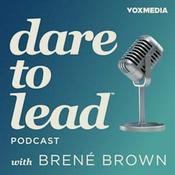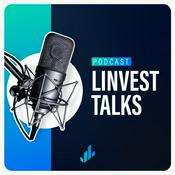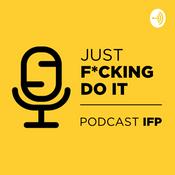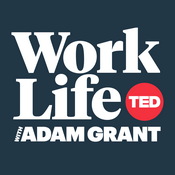Episodios disponibles
5 de 174
- Here’s What Your Retirement Spending Rate Should Be in 2026Most retirees want to spend as much as they can without having to worry about running out of money. Morningstar’s State of Retirement Income research analyzes retirement spending strategies to determine the highest safe starting withdrawal rate for new retirees in 2026. Christine Benz, Morningstar’s director of personal finance and retirement planning and co-host of The Long View podcast, breaks down the research and shares some ideas about how you can boost your retirement spending.What’s a Safe Retirement Withdrawal Rate for 2026?On this episode:00:00:00 Welcome00:00:46 Each year, you and your colleagues producethis really comprehensive research about retirement income. And as part of that research, you try toidentify what a safe withdrawal rate will be for the year ahead. 00:01:59 What is that safe withdrawal percentage, and how did you arrive at that conclusion?00:02:41 The 4% rule often comes up in the conversation around retirement spending. How does that compare to your base case?00:03:30 I know there are some misperceptions about your retirement income research and what that safe withdrawal percentage means. What are they? 00:03:28 So, how should retirees use this research?00:04:51 The safe starting withdrawal rate that you found in your base case might feel a little low for some retirees. Are there other strategies that retirees can use to boost their spending?00:07:02 So, flexible strategies are best suited for retirees that are focused on maximizing their spending. 00:08:52 What kind of retiree would benefit from a more rigid strategy, like the fixed inflation-adjusted spending approach that you use in your base case?00:09:26 How does asset allocation come into play? Would a stock-heavy portfolio support a higher withdrawal rate in retirement?00:10:36 So far, we’ve focused on portfolio income strategies, but you also looked at nonportfolio income sources like annuities and Social Security. What did you find?00:13:34 It seems like there’s some more nuance to the suggestion of delaying Social Security. Can you talk about that? 00:14:50 How about annuities? Can you discuss some of the key considerations that income-centric retirees should bear in mind?00:16:07 Studies have found that retirees don’t actually spend the same amount over the course of their retirement. What does actual retirement spending tend to look like, and how might that affect a retiree’s plans?00:17:59Let’s talk about some scenarios that can throw off a retiree’s plan. One might be a market downturn early in retirement. What kind of impact could that have on spending? 00:18:56 Another scenario might be retiring earlier than expected. What kind of implications would that have for safe withdrawals?00:20:26 What is one final takeaway from the research that you want retirees to come away with? Watch more from Morningstar:How ETFs Help You Cut Your Tax BillTax-Loss Harvesting Isn’t Just for Downturns. Here’s WhyBond ETFs Are Surging in Popularity in 2025. Here Are 5 of the Best Follow Morningstar on social:Facebook https://www.facebook.com/MorningstarInc/X https://x.com/MorningstarIncInstagram https://www.instagram.com/morningstarinc/?hl=enLinkedIn https://www.linkedin.com/company/morningstar/posts/?feedView=all Hosted by Simplecast, an AdsWizz company. See pcm.adswizz.com for information about our collection and use of personal data for advertising.--------22:30
- How ETFs Help You Cut Your Tax BillExchange-traded funds can help you cut your tax bill. All funds must distribute capital gains from the stocks and bonds that they sell throughout the year. The gains can leave you stuck with unwanted taxes. ETFs and mutual funds differ when it comes to tax efficiency. It starts with how the investments are traded and how the transactions are treated. The differences can result in ETF investors owing less than mutual fund investors or nothing at all because ETFs can minimize their capital gain distributions. Bryan Armour, Morningstar’s director of ETF and passive strategies research for North America, explains how ETFs beat mutual funds at the tax game.ETFs vs. Mutual Funds: The Benefits That Really Matter On this episode:00:00:00 Welcome00:01:01 ETFs are more tax-friendly than their mutual fund rivals. Why is that?00:02:17 How does the way ETFs are traded limit the tax drag that affects mutual funds?00:03:23 ETF investors will eventually pay a tax bill. Why is it important to control when that happens?00:04:04We talked about tax drag. What about cash drag? How are ETFs winning here?00:04:51An ETF’s underlying strategy can sharpen or dull the edge it has over a mutual fund when it comes to capital gains. Which ETF strategies have held the biggest advantage over the past few years?00:05:40Can you talk about the tax issues involving international stocks when managing gains in an ETF?00:06:55And what about taxable-bond ETFs versus mutual funds?00:07:37 Some ETFs do not benefit from tax efficiency. Which investments are those, and why don’t they?00:08:24High-turnover strategies, where there’s a lot of buying and selling, can result in a big tax bill for investors. What have you found when you compared two momentum strategies?00:08:58How can outflows leave loyal investors with a big tax bill?00:09:49Active ETFs’ popularity is soaring. How tax-friendly are these investments versus their passive peers and mutual funds?00:10:52 Which ETFs belong in taxable accounts and tax-advantaged accounts like an IRA or 401(k) to maximize tax efficiency?00:11:55What if someone listening or watching just realized they should work on their asset location? What should they do?00:12:54What’s the takeaway for using ETFs to cut tax bills? Watch more from Morningstar:Tax-Loss Harvesting Isn’t Just for Downturns. Here’s Why Bond ETFs Are Surging in Popularity in 2025. Here Are 5 of the BestInvestors Still Need to Mind the Gap in Their Funds’ Returns Follow Morningstar on social:Facebook https://www.facebook.com/MorningstarInc/X https://x.com/MorningstarIncInstagram https://www.instagram.com/morningstarinc/?hl=enLinkedIn https://www.linkedin.com/company/morningstar/posts/?feedView=all Hosted by Simplecast, an AdsWizz company. See pcm.adswizz.com for information about our collection and use of personal data for advertising.--------15:20
- Tax-Loss Harvesting Isn’t Just for Downturns. Here’s WhyYour portfolio might be due for an end-of-the-year cleanup. The Morningstar US Market Index is up about 15% through mid-November 2025, and overall performance has been strong for years (even after 2022’s down market). That said, some stock sectors have performed significantly better than others, and performance can vary widely even within a sector. That could mean you’relikely holding some winners and some losers. Tax-loss harvesting could help trim your tax bill to save some money. While you’re tuning up your portfolio, it could also be a good opportunity to bring your asset allocation back into balance. Morningstar portfolio strategist Amy Arnott is here to explain how to pull off both strategies.How to Rebalance Your Portfolio in a Lofty Market https://www.morningstar.com/portfolios/how-rebalance-your-portfolio-lofty-marketOn this episode:00:11 Welcome01:03 What is tax-loss harvesting, and how does it work?01:41 Is a brokerage or retirement account better suited for tax-loss selling? Why?02:12 The US stock market has experienced solid growth so far in 2025. Do up markets make it harder to spot losses?02:52 Why is tax-loss harvesting still a good strategy even when times are good?03:32 Where can investors find losses to offset gains in their portfolio this year? Let’s start with stocks.04:33 And what about mutual funds and ETFs?05:17 Can you explain what wash-sale rules are, and how to play by the IRS’ rules?06:39 What are some other strategic ways to take advantage of the losses?07:55 In the spirit of tuning up our portfolio, this might be a good time to rebalance. How does that work, and why can it be an emotional challenge sometimes?09:14 The 60/40 portfolio might need rebalancing. What’s happened over the past decade?09:43 And what about growth versus value and US versus international stocks?10:44 What are a few tips on how to restore balance to a portfolio? 12: 48 What is the takeaway for taking this time of year to do tax-loss harvesting and rebalancing? Watch more from Morningstar:Bond ETFs Are Surging in Popularity in 2025. Here Are 5 of the BestInvestors Still Need to Mind the Gap in Their Funds’ ReturnsThe US Dollar Is Weak. Is Your Portfolio at Risk? Follow Morningstar on social:Facebook https://www.facebook.com/MorningstarInc/X https://x.com/MorningstarIncInstagram https://www.instagram.com/morningstarinc/?hl=enLinkedIn https://www.linkedin.com/company/morningstar/posts/?feedView=all Hosted by Simplecast, an AdsWizz company. See pcm.adswizz.com for information about our collection and use of personal data for advertising.--------15:47
- Bond ETFs Are Surging in Popularity in 2025. Here Are 5 of the BestInvestors are betting big on bond exchange-traded funds. Hundreds of billions of dollars have poured into bond ETFs in the first nine months of 2025. And more of these strategies have hit the market over the past several years. It’s important to remember that some bond ETFs are riskier than others. What should investors consider before tweaking their portfolio? Dan Sotiroff, a senior manager research analyst at Morningstar Research Services and the editor of the Morningstar ETFInvestor newsletter, discusses that and shares five top ideas for income investors.Subscribe to Morningstar ETFInvestor for the full list of highly-rated bond ETFs. 00:00:00 Introduction00:00:54 Bond ETFs are having a banner year. Why are investors turning to these investments? 00:02:31 Which is getting the bigger slice: passively or actively managed bond ETFs?00:03:15 What are the four major types of bond ETFs, and how do they differ?00:04:35 This month’s edition of Morningstar ETFInvestor analyzed more than a dozen bond ETFs. What makes a core bond ETF a solid portfolio building block?00:05:47 What’s the top idea that’s received high marks from Morningstar?00:06:27 We’re shifting from the least risky to the next level up, core-plus. What do these bond ETFs typically offer that an index-tracking ETF does not?00:07:11 Can you tell us one intermediate core-plus bond ETF that’s earned a Gold rating from Morningstar?00:07:44 Multisector bond ETFs take on a bit more risk than the previous two categories, and that comes with an expectation of more income. Should income investors skip the others and start here?00:08:59 It’s time for the third top idea. What multisector bond ETF should folks consider?00:09:25 High-yield bond ETFs are the riskiest among the categories we’re discussing today. What additional risks are investors taking on for the juicy yields?00:10:30 Morningstar does not currently rate any actively managed high-yield bond ETFs. Is there one that income investors should watch?00:11:28 What’s the takeaway for folks figuring out if these types of bond ETFs fit in their portfolios?Watch more from Morningstar:Investors Still Need to Mind the Gap in Their Funds’ ReturnsThe US Dollar Is Weak. Is Your Portfolio at Risk?2025’s Winners and Losers, from Gold to Small Cap Stocks to the 60/40 PortfolioFollow Morningstar on social:Facebook https://www.facebook.com/MorningstarInc/X https://x.com/MorningstarIncInstagram https://www.instagram.com/morningstarinc/?hl=enLinkedIn https://www.linkedin.com/company/morningstar/posts/?feedView=all Hosted by Simplecast, an AdsWizz company. See pcm.adswizz.com for information about our collection and use of personal data for advertising.--------14:18
- Investors Still Need to Mind the Gap in Their Funds’ ReturnsAre you getting the most out of your fund’s performance? Over the past 10 years, the average dollar invested in US mutual funds and exchange-traded funds earned 1.2% less per year than what those funds returned during the same period. That’s the top-line finding in this year’s Mind the Gap study, which aims to address the question of where investors succeeded in capturing most of their funds’ returns, and where they fell short. Jeff Ptak, a managing director for Morningstar Research Services, breaks down the takeaways from the report and what investors can do if they want to avoid leaving money on the table.Mind the Gap US 2025On this episode:00:52 How does the report measure the difference between investor returns and total returns?02:16 How does the latest research compare with previous years? Is the “gap” going away?02:58 This difference in investor returns and total returns doesn’t just come from people failing to time the market. What else might cause the gap?04:29 Where have investors been able to capture most of their funds’ total returns, and where have they fallen short? Are there certain categories that stand out?06:18 Exchange-traded funds continue to gain popularity and market share. Did the investment type, mutual fund or ETF, make a difference in investor outcomes?07:57 Morningstar research has found that active funds have largely struggled to beat their benchmarks, but certain categories are better suited for active management than others. Is there a difference in the investor return gap in active versus passive funds?09:02 The study found that the more investors traded, the less they made. Why is that?10:40 Morningstar has found that fees tend to be a predictor of performance. Does that finding hold when looking at investor returns?12:12 The report also looked at the effects of return volatility. How did that translate to investor outcomes?13:18 You’ve written that where a fund is utilized can be just as important as the type of fund and how it’s used. Can you explain that?15:05 What is one takeaway from your research? Watch more from Morningstar:The US Dollar Is Weak. Is Your Portfolio at Risk?2025’s Winners and Losers, from Gold to Small Cap Stocks to the 60/40 PortfolioThe Stock Market Is Ultra-Concentrated. Here’s How to Manage the Risks. Follow Morningstar on social:Facebook https://www.facebook.com/MorningstarInc/X https://x.com/MorningstarIncInstagram https://www.instagram.com/morningstarinc/?hl=enLinkedIn https://www.linkedin.com/company/morningstar/posts/?feedView=all Hosted by Simplecast, an AdsWizz company. See pcm.adswizz.com for information about our collection and use of personal data for advertising.--------18:40
Más podcasts de Economía y empresa
Podcasts a la moda de Economía y empresa
Acerca de Investing Insights
A thoughtful look at investing opportunities and risks beyond the market headlines, plus personal finance and retirement tips, from Morningstar.
Sitio web del podcastEscucha Investing Insights, Tengo un Plan y muchos más podcasts de todo el mundo con la aplicación de radio.es
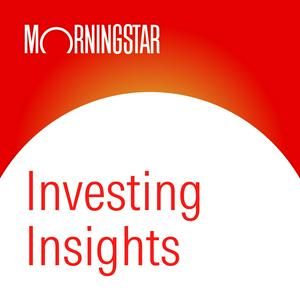
Descarga la app gratuita: radio.es
- Añadir radios y podcasts a favoritos
- Transmisión por Wi-Fi y Bluetooth
- Carplay & Android Auto compatible
- Muchas otras funciones de la app
Descarga la app gratuita: radio.es
- Añadir radios y podcasts a favoritos
- Transmisión por Wi-Fi y Bluetooth
- Carplay & Android Auto compatible
- Muchas otras funciones de la app


Investing Insights
Escanea el código,
Descarga la app,
Escucha.
Descarga la app,
Escucha.













